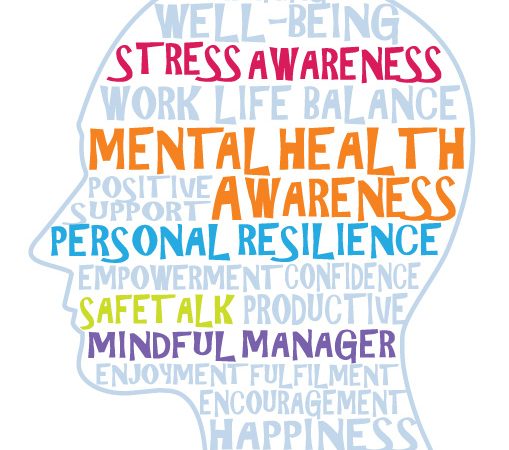Introduction
In their Annual Report and Accounts 2017/2018, the Health and Safety Executive (HSE) stated that there were “0.5 million work-related stress, depression or anxiety cases (new or long-standing) in 2016/17” (HSE, 2018, p.9).

What is the HSE?
“HSE is the independent regulator for work-related health and safety in Great Britain. We are committed to playing our part in the wider health and safety system to ensure that others play theirs in creating healthier, safer workplaces. We also deliver wider functions such as regulatory schemes intended to protect the health of people and the environment, balancing the economic and social benefits that chemicals offer to society.” (HSE, 2018, p.10).
HSE and Stress
HSE states that where (work-related) stress is prolonged it can lead to both physical and psychological damage, including anxiety and depression, and that work can also aggravate pre-existing conditions, and problems at work can bring on symptoms or make their effects worse.
They go on to state that whether work is causing the health issue or aggravating it, employers have a legal responsibility to help their employees. Work-related mental health issues must to be assessed to measure the levels of risk to staff. Where a risk is identified, steps must be taken to remove it or reduce it as far as reasonably practicable.
Some employees will have a pre-existing physical or mental health condition when recruited or may develop one caused by factors that are not work-related factors.
Employers may have further legal requirements, to make reasonable adjustments under equality legislation.
Information about employing people with a disability can be found on GOV.UK or from the Equality and Human Rights Commission in England, Scotland, and Wales.
There is advice for line managers to help them support their employees with mental health conditions.
What is the Stevenson Farmer ‘Thriving at Work’ Review?
In 2017, the UK government commissioned Lord Stevenson and Paul Farmer (Chief Executive of Mind) to independently review the role employers can play to better support individuals with mental health conditions in the workplace.
The ‘Thriving at Work’ report sets out a framework of actions – called ‘Core Standards’ – that the reviewers recommend employers of all sizes can and should put in place.
The core standards were designed to help employers improve the mental health of their workplace and enable individuals with mental health conditions to thrive.
By taking action on work-related stress, either through using the HSE Management Standards or an equivalent approach, employers would be able to meet parts of the core standards framework, as they would:
- Form part of a mental health at work plan;
- Promote communications and open conversations, by raising awareness and reducing stigma; and
- Provide a mechanism for monitoring actions and outcomes.
Can Mental Health and Work-related Stress be Interlinked?
Work-related stress and mental health problems often go together and the symptoms can be very similar. For example, work-related stress can aggravate an existing mental health problem, making it more difficult to control. And, if work-related stress reaches a point where it has triggered an existing mental health problem, it becomes hard to separate one from the other.
Common mental health problems and stress can exist independently. For example, an individual can experience work-related stress and physical changes such as high blood pressure, without having anxiety, depression or other mental health problems. They can also have anxiety and depression without experiencing stress.
The key differences between them are their cause(s) and the way(s) they are treated.
- Stress is a reaction to events or experiences in someone’s home life, work life or a combination of both.
- Common mental health problems can have a single cause outside work, for example bereavement, divorce, postnatal depression, a medical condition or a family history of the problem.
However, an individual can have these sorts of problems with no obvious causes. Employers can help manage and prevent stress by improving conditions at work. But they also have a role in making adjustments and helping the individual manage a mental health problem at work.
Linking HSE’s Management Standards, and Mental Ill Health and Stress
Although stress can lead to physical and mental health conditions, and can aggravate existing conditions, the good news is that it can be tackled.
By taking action to remove or reduce stressors, an employer can:
- Prevent an individual becoming ill; and
- Avoid those with an existing condition becoming less able to control their illness.
HSE’s Management Standards approach to tackling work-related stress establishes a framework to help employers tackle work-related stress and, as a result, also reduce the:
- Incidence of mental ill health; and
- Negative impact of mental ill health.
The Management Standards approach can help employers put processes in place for properly managing work-related stress. By covering six key areas of work design employers will be taking steps that will:
- Minimise pressure;
- Manage potential stressors; and
- Limit the negative impact that the work could have on their employees.
References
HSE (Health & Safety Executive). (2018) Annual Report and Accounts 2017/18. Available from World Wide Web: http://www.hse.gov.uk/aboutus/reports/ara-2017-18.pdf. [Accessed: 18 November, 2019].
HSE (Health & Safety Executive). (2019) Mental Health. Available from World Wide Web: https://www.hse.gov.uk/stress/mental-health.htm. [Accessed: 18 November, 2019].
